Welcome back!
If today you do not feel like reading, feel free to watch the video below! 🙂
The rule for this weekend was – before we start any renovation, we need to clear up the area.
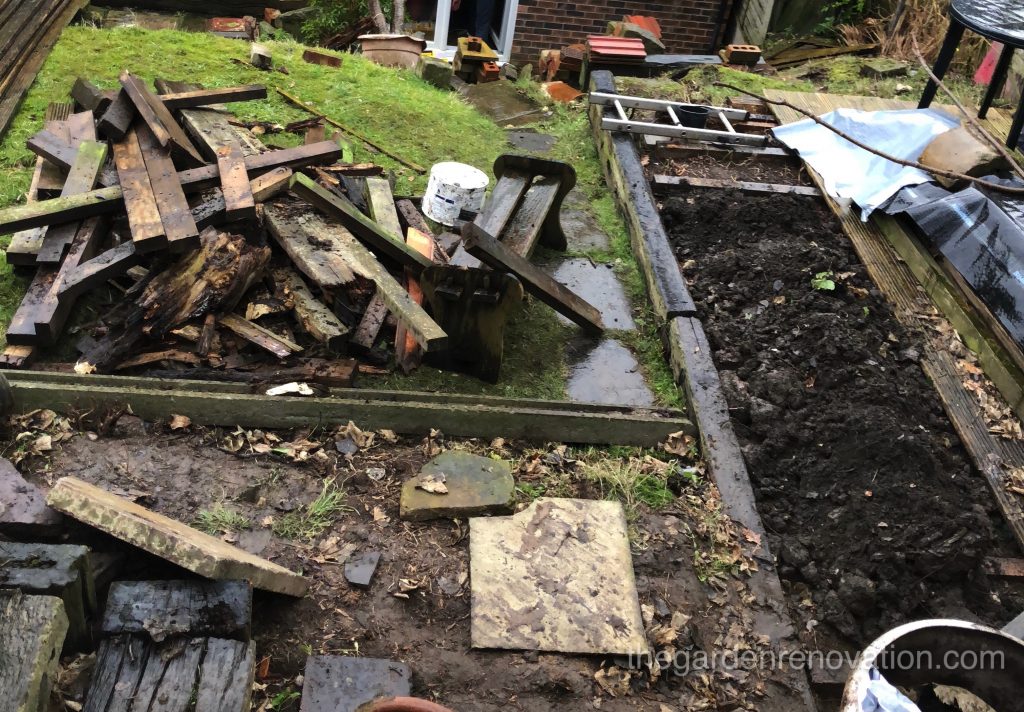
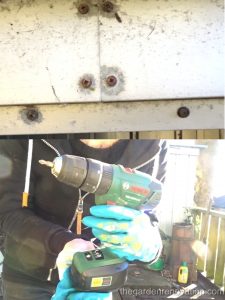
Since last week, we have decided that the metal shed had to go… R took on this demolition task! The shed was mainly held up with very short metal screws (perhaps 10 millilitres) and a plastic black washer to stop them driving through the aluminium sheets. With our cordless power drill (a cross screw head) we started to unscrew!
The flat roof of the shed went as first. Since the shed was at the back corner of our property, R performed some acrobatics and precarious balancing on the neighbour’s fence (which you can see on the video 😀 ) to get all the screws. She started from the roof, followed by doors, sides and the back as the last piece. I showed up as she was finishing up with the last few screws from the roof and helped pull the sheets off the shed and onto the garden floor. For the rest of the demolition, we had to deal with our unwanted tenants – spiders – they had enjoyed a dry and dark home for some time judging by the number of spider webs. Our crowbar was indeed very helpful in persuading the tenants that they had overstayed their welcome, or actually that they were never welcome in the first place.
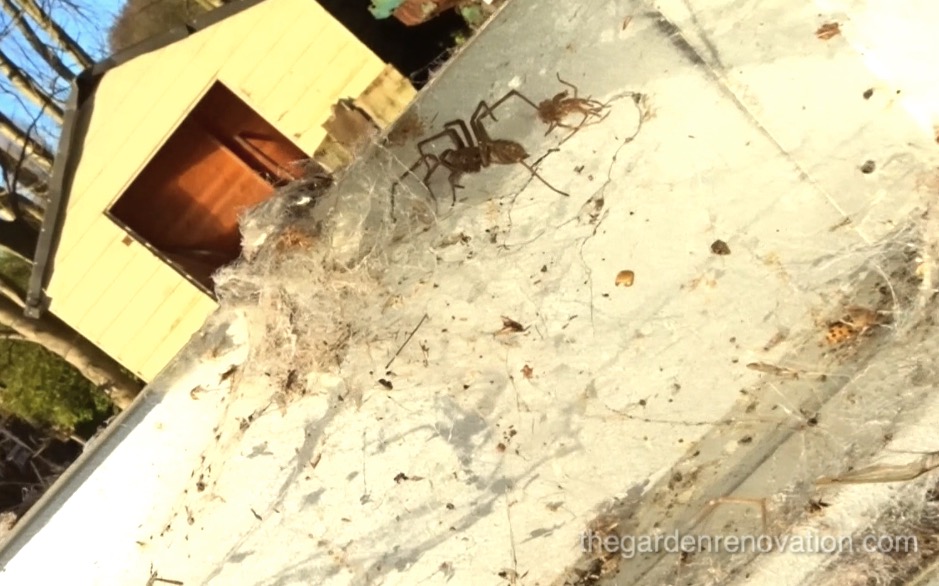
Most of the screws from the shed came out with little effort, but some others had oxidised and were pretty well stuck, surprisingly none of the cross-heads was scraped clean, but in a few occasions we had to use the crowbar to force the screw through the aluminium. By the end of the day, we had managed to remove the roof, the two doors, the front wall and one of the side walls. Unfortunately, due to winter time, we could not get to the rest of the screws in time before the day was gone.
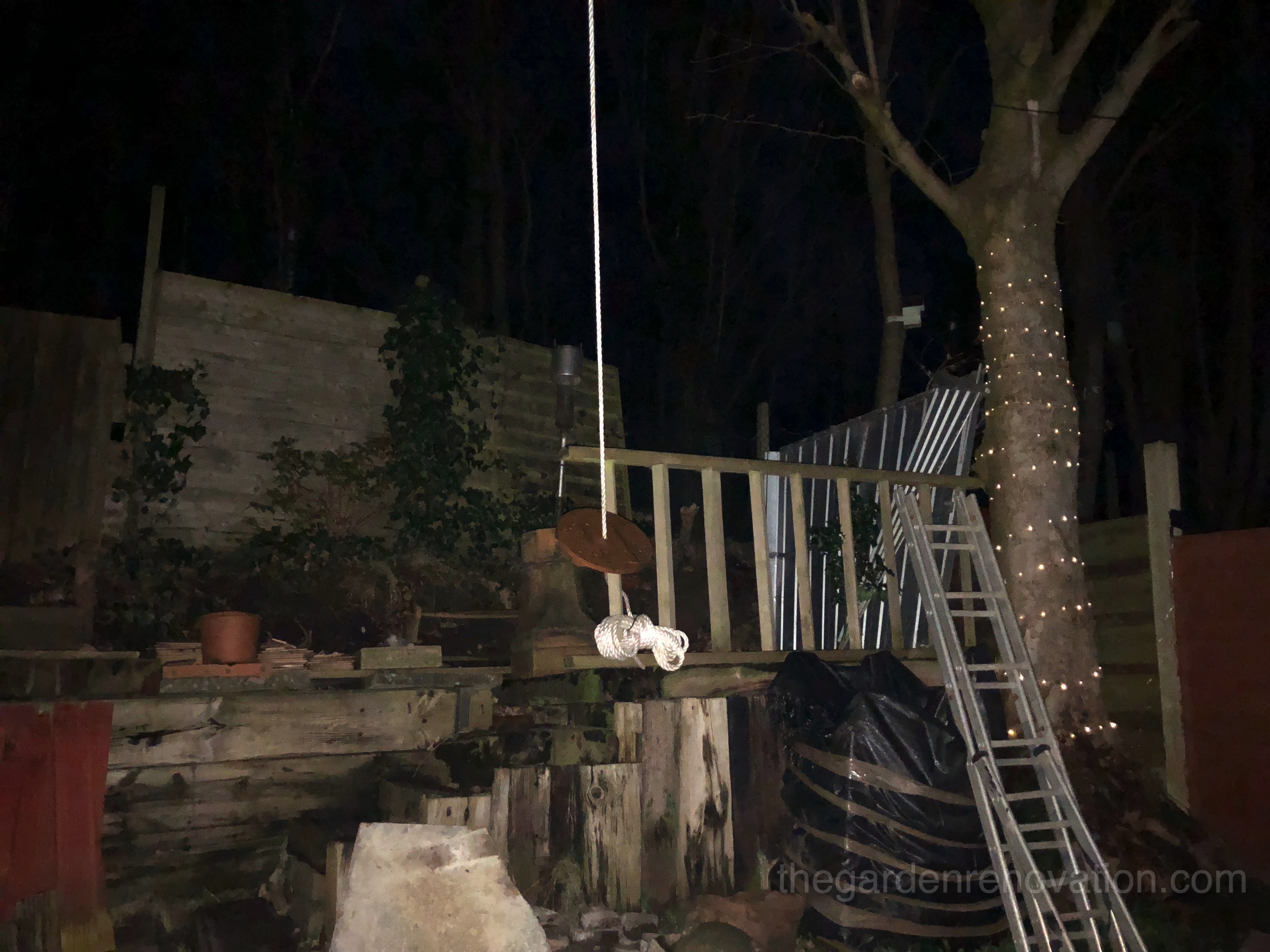
While R was fighting with the shed, I moved on to the other task we had started the week before, getting rid of the rotten and broken wood. The previous weekend we got out into the garden with the intention to assess the situation and start the clear up, but we ended up making a big mess in the middle of the garden with parts of broken fence and old rotten wooden posts. Each of these posts was riddled with 100 millilitres steel nails that by now were completely rusted. So the small semi-flat area of grass at the top of our garden was now filled with a rusty spiky wooden pile and needed to be taken to the skip urgently.
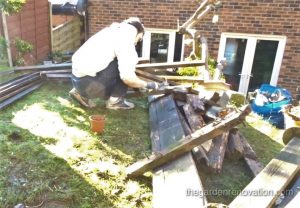
Nail removal
I started to go through the pile and found myself sorting it. On the left, I put all the wood that was too far gone or had too many nails to be worth removing and on the right, I moved all the lumber that was still in good condition and that we could potentially use for future fixes or builds. It turns out that hammering out 5 x 100 milliliters rusty nail from 10 x 10 centimeter timber is not easy work, almost all nails seemed to prefer to bend out of shape rather than slide out the way they had originally come from… as a result I only salvaged 6-8 pieces of wood and the rest went into the tip pile.
Now, the next challenge was getting the discard pile to the skip…
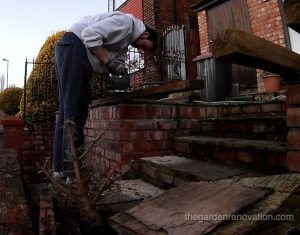
Cutting wood
Just to illustrate how well equipped we are for this renovation, our means of transporting materials is our trusty Ford – hatchback type 😀 . We have a small 1.6-litre diesel car that we bought to commute to work which now doubles as a van. Obviously, it’s not a van and even when we put the back seats down, there is not enough space to fit a 3-meter long spiky scrap lumber. The solution was to move all the scraps to the front porch of the house and then cut them to about 90 centimetres (the width of the booth). As a result, for some part of the afternoon, I made a good use of our jigsaw and cut into smaller pieces all the scarps.
You will agree that this does not sound too bad – we’ve got an electric tool and a car to carry it all away, but still, there was a bit more involvement where wood was 15 centimetres and my jigsaw blade only goes about 10 centimetres… I tried to cut through it, thinking that maybe I would do two passes – one form each side. The jigsaw would have none of it, it was barely making a dent in the wood and I did not want to risk breaking the saw so I decided to saw these by hand with a hand saw.
The drive to the skip was quite fun, a car filled to the brim with rotted wood and rusty nails, but since its only 5 minutes down the road, I took my time and took extra care not to turn too sharply. The rest of the day was spent driving back and forth a couple of times to the skip and clearing all the wood out of the way. In the end, it got very dark way too quickly!
Another task, we got ourselves cracking on was partially removing the decking, as well as the red panelling covering the support for the wooden shed (see the photo below). By removing the panelling, we discovered that both platform and the shed are already leaning by about 3-4 centimetres. In terms of good news, we could now see that the railway sleepers which are holding the whole shed are still in a pretty good condition!
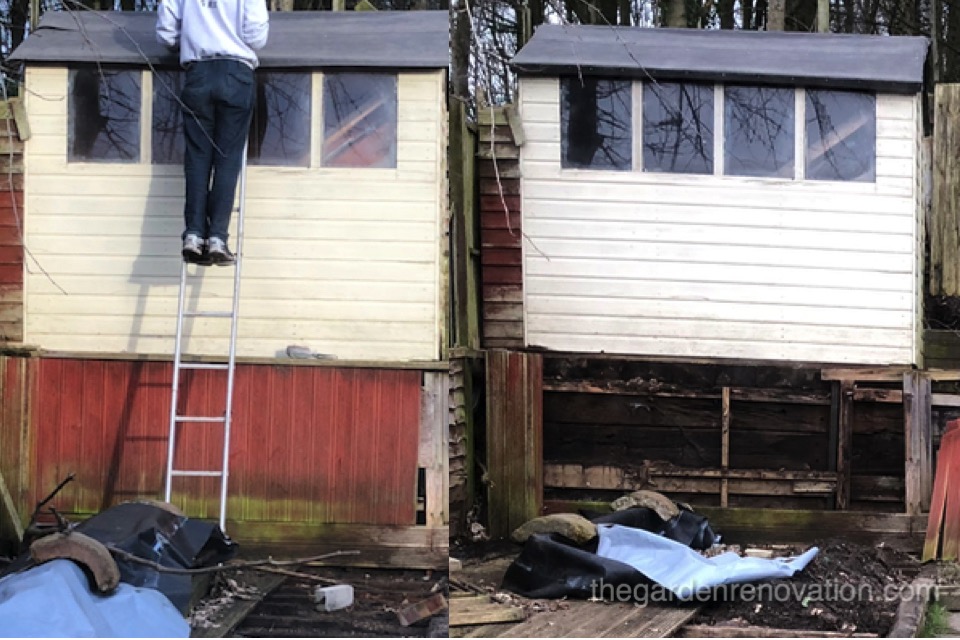
Our shed was leaning because at the very back of our garden, there is an old wooden retaining wall which was now leaning and pushing against our shed. This not only made the shed to change the position but it also made it rot from one side as the moisture was gradually accumulating (see previous post for the photo of the damage). That day, we decided we should at least partially remove the wooden retaining wall and to do that we had to dig out some of the earth from behind the shed. As our lawn space was taken out by all sort of wood rubbish, we have decided to partially remove our decking to make a space for the earth. The removal of the decking planks was pretty easy I must say! The planks were fixed with really long screws and we got these out with our cordless drill.
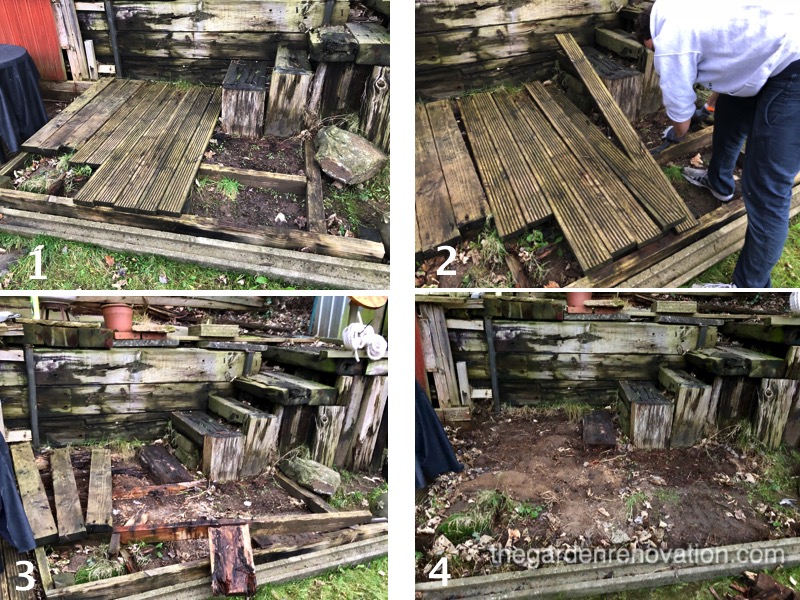
Overall, I would say we had a successful first weekend of renovation. Clearing out all the old broken and unwanted things has this positive effect, makes you feel a little lighter. On top of that, removing the clutter gives you a picture as to what should go next. There is a lot more that we need to clear out, we still have the old rotten decking, the aluminium from the shed, plenty of stones and bricks left over form a 10-year-old extension… And while there is lots more things to do, we will get them another day…
See you next time!
Checkout the next article Weekend 2 – Dismantling the platform and decking.



2 Comments
Cleta · August 21, 2018 at 10:08 am
Thank you for the terrific post
Ermelinda · September 8, 2018 at 6:06 pm
It works quite well for me